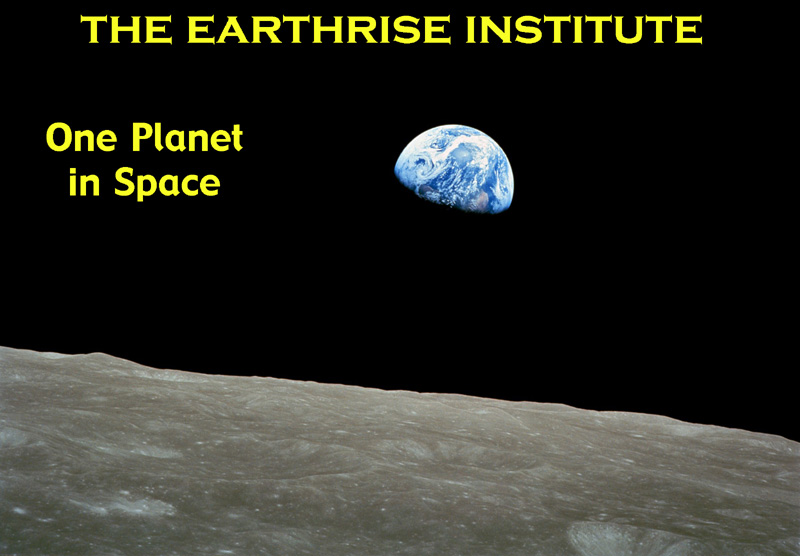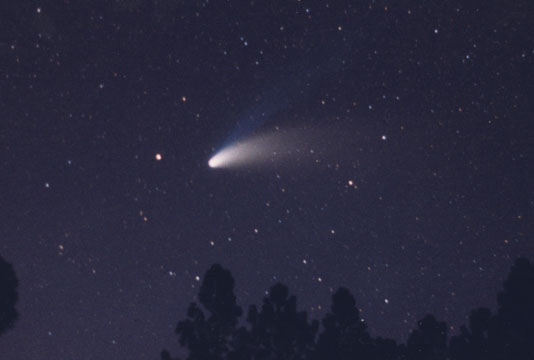
(for comets 1 through 500)
as of July 1, 2013

Four of the first 500 comets can be considered "ongoing" at this time. These are:
174P/Echeclus P/2000 EC98 (no. 384): As I indicated on the original statistics page, this Centaur comet underwent a dramatic outburst in late 2005 when located over 13 AU from the sun, and I was able to obtain a handful of observations of it as an extremely faint object in early 2006 before the outburst faded. It is still almost two years away from perihelion passage (still at a distant 5.8 AU from the sun) and could conceivably undergo additional outbursts between now and then, or afterwards. P/Echeclus actually did undergo an outburst in May 2011, but did not quite become bright enough for me to observe.
LONEOS C/2006 S3 (no. 480): I was close to being finished with this comet as of July 1, 2013, but I have been able to follow it slightly past that time.
LINEAR C/2010 S1 (no. 494): This comet has recently passed through perihelion and is currently near opposition. I should be able to follow it through the remainder of the current viewing season, and rather likely through the 2014 opposition as well.
29P/Schwassmann-Wachmann 1 (no. 498): I picked this comet up shortly after it went through aphelion in late 2011. It does not pass perihelion until March 2019, and it is at aphelion again in 2026. The comet is notable for its outbursts, which occur unpredictably and randomly, and if it maintains a reasonable level of activity I should be following it up close to its next aphelion. Thus far its activity level has been somewhat low (at least when compared to the activity it has exhibited during recent years); the brightest outburst since its 2011 aphelion was one to 13th magnitude in June 2013.
General statistics, comets 1-500
The average perihelion distance of the first 500 comets is 1.531 AU, and the median is 1.381 AU. They have ranged from 0.006 AU for Comet Lovejoy C/2011 W3 (no. 500) to 8.454 AU for Comet 96P/Chiron (no. 196). 18 of these comets have a perihelion distance of 0.20 AU or less, and 14 have a perihelion distance of 5.0 AU or larger.
The average tracking interval is 133 days, and the median is 68 days. The longest tracking interval was for the 2004 return of Comet 29P/Schwassmann-Wachmann 1 (no. 226), which lasted for 14 years, 4 1/2 months. I followed 35 of these comets for over one year, 18 of these for over 18 months, and 7 of these for over two years.
My average number of observations per comet (rounded to the nearest whole number) is 11 (mathematically, 11.4), and the median is 8. My most-observed comet is Comet Hale-Bopp C/1995 O1 (no. 199), with 182 observations, with the 2004 return of Comet 29P/Schwassmann-Wachmann 1 (no. 226) being a close second, with 181 observations. There are 7 comets for which I have over 50 observations, and 3 for which I have 100 observations or more.
The average peak brightness I have observed for the comets is magnitude 10.4, and the median peak brightness is magnitude 11.0. The brightest comet I've observed is Comet McNaught C/2006 P1 (no. 395), for which I measured a peak brightness of magnitude -4; the faintest comets are 95P/Chiron (no. 196) and LINEAR C/2002 CE10 (no. 340), which never were brighter than magnitude 15.0. I've observed 53 comets which reached a peak brightness of magnitude 6.0 or brighter; of these, I've observed 35 with my unaided eye.
The average wait time between additions to my tally (rounded to the nearest day) is 31 days (mathematically, 30.7 days), and the median wait time is 20 days. There have been two occasions when I have added three comets to my tally in one night (numbers 181 through 183 and 491 through 493), and meanwhile the longest wait time was for Comet Bradfield 1972f (no. 7), which was slightly over one year.
General statistics, comets 401-500
The average perihelion distance for these comets is 1.710 AU, and the median is 1.432 AU. They have ranged from 0.006 AU for Comet Lovejoy C/2011 W3 (no. 500) to 5.900 AU for Comet LINEAR C/2010 S1 (no. 494). Two of these comets have perihelion distances of 0.20 AU or less, and four of them have perihelion distances of 5.0 AU or larger.
The average tracking interval for these comets is 159 days, and the median tracking interval is 88 days. There were three comets in this group that I only observed once (hence a tracking interval of zero), and the current longest is slightly over 1000 days, for Comet LONEOS C/2006 S3 (no. 480). Comet 29P/Schwassmann-Wachmann 1 (no. 498) should eventually far exceed this. I followed 11 of these comets for over one year, 8 (thus far) of these over 18 months, and 3 (thus far) of these for over two years.
My average number of observations of these comets is 12.5, and the median number of observations is 9.5. The most-observed of these comets is Comet Christensen C/2006 W3 (no. 422), with 64 observations; Comet 29P/Schwassmann-Wachmann 1 (no. 498) will likely eventually exceed this.
The average peak brightness of these comets was magnitude 11.3, and the median peak brightness was magnitude 12.0. The brightest of these comets was Comet 17P/Holmes (no. 414), which reached magnitude 2; four of these comets did not exceed a peak brightness of magnitude 14.5. Seven of the comets in this group reached a peak brightness of magnitude 6.0 or brighter (as I measured them); of these, I observed five with my unaided eye.
The average wait time for the addition of these comets to my tally was 18 days, and the median wait time was 14.5 days. One one occasion I added three of these comets in one night (numbers 491 through 493); the longest wait time for one of these comets was 87 days, for Comet McNaught C/2011 C1 (no. 484).
Other miscellaneous comments
The smallest heliocentric distance at which I've observed a comet is 0.171 AU, for Comet McNaught C/2006 P1 (no. 395), which I was observing (in daylight!) at the moment of perihelion. The largest heliocentric distance at which I've observed a comet is 13.049 AU, for Comet 174P/Echeclus (no. 384) during its outburst in early 2006. The smallest geocentric distance at which I've observed a comet is 0.031 AU, for Comet IRAS-Araki-Alcock 1983d (no. 56) during its flyby of Earth in May 1983, and the largest geocentric distance at which I've observed a comet is 13.022 AU, again for Comet 174P/Echeclus (no. 384).
The longest tail I have ever observed on a comet is 70 degrees, for Comet Hyakutake C/1996 B2 (no. 212), shortly after its close approach to Earth in March 1996.
My record for most comets observed in one night is 15, which took place on the night of March 21-22, 2009. My record for most comets observed in one year is 34, set in 2002 and tied in 2008. My record for most comet observations in one year is 334, set in 2008.
There were two occasions when I observed two comets simultaneously in the same telescope field, one occasion when I observed two comets simultaneously in the same binocular field, and two occasions when I observed two comets simultaneously with my unaided eye.
The most productive month for comet discoveries (and recoveries) for my first 500 comets is January, with 48; the least productive is February, with 18. The most productive month for comets passing through perihelion is December, with 64; the least productive is June, with 24. The most productive month for adding the first 500 comets to my tally is August, with 60; the least productive is June, with 23.
My first 500 comets include 118 numbered periodic comets (of the 291 periodic comets that have been numbered as of this writing); this total includes those that have been numbered since the addition of comet no. 500. (One additional comet from the first 500 has recently been recovered on a second return and should be numbered in the near future). Of these 118 comets, as of comet no. 500 I had observed 57 on one return, 28 on two returns, 11 on three returns, 15 on four returns, 5 on five returns, one (81P/Wild 2) on six returns, and one (2P/Encke) on ten returns, for a total of 129 "repeat" comets (and thus a total of 371 separate comets out of the 500).
A total of 217 different names (of which 200 are of actual people) are represented in the tally of the first 500 comets. 107 of these names (including Hale) appear only once. The name that appears most often in this tally is LINEAR, with 56 appearances, followed by a tie between Shoemaker and McNaught (each with 20), then Levy (17), Machholz (16), Hartley (14), Bradfield (13), and NEAT (12).
The observing locations for my first 500 comets include 10 states within the U.S. (Arizona, California, Colorado, Maryland, New Mexico, Oklahoma, Tennessee, Texas, Utah, and Washington) plus the District of Columbia, and from six countries outside the U.S. (Australia, Indonesia, Iran, Mexico, New Zealand, and Zimbabwe) as well as from international waters in the Pacific Ocean (during my Navy years) and the Caribbean Sea (during an eclipse cruise).
By the time I added comet no. 500 to my tally, I had made unsuccessful visual attempts for 213 other comets (two of which I have since successfully observed). Of these comets, I successfully imaged 13 of them with CCD. Also, by the time I added comet no. 500 to my tally, I had observed 18 asteroids (on a combined total of 22 "returns") that, due to orbital and/or physical considerations, could theoretically be considered as "extinct" or "dormant" comets, and thus could be added to my tally retroactively if future observations warrant their classification as "dual-status" comets. (In theory, this number could be even higher, but I am only including those objects that at present warrant serious consideration as potential "dual-status" objects.) There are a handful of additional such objects for which I made unsuccessful visual attempts; I successfully imaged one of these with CCD.
From an entirely subjective standpoint, the "best" comet I have observed is Comet West 1975n (no. 20) during its appearance in the morning sky in early March 1976.